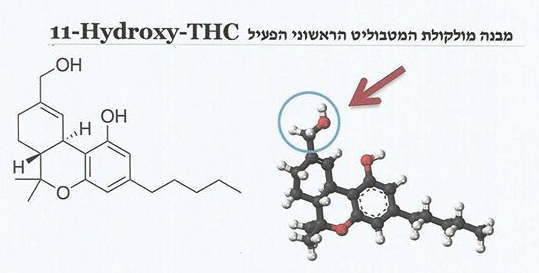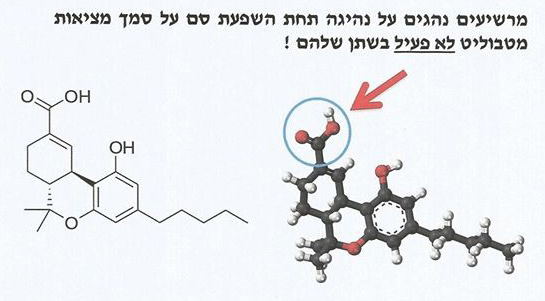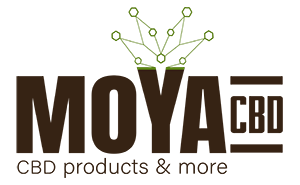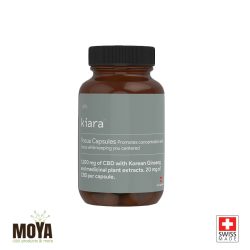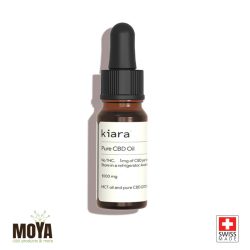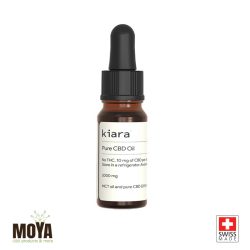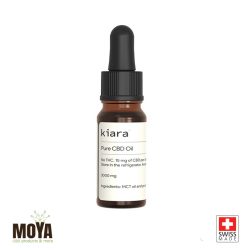Cannabidiol (CBD) Cannabis & Driving
The main cause of traffic accidents at the moment is excessive alcohol (ethanol) consumption that causes dangerous and adventurous driving. The “owl” test on the roads indicates the level of ethanol in the air that is breathed reliably and quickly.
Driving a vehicle is prohibited when the blood alcohol concentration level exceeds 50 milligrams of alcohol in 100 ml of blood (blood test), 240 micrograms per gallon of exhaled air. Driving up to 0.05% (as is the law) is at the permitted level. On the subject of the effects of cannabis on driving the picture is much more complex.
First we separate marijuana, which contains large amounts of THC compared to hemp that does not contain the psychoactive ingredient in intoxicating amounts. This separation is necessary today in light of the multiplicity of consumers and a new range of target audiences, who have begun using cannabis products derived from the hemp plant in the past two years and have a concentration of less than 0.3% THC or are without of THC in general.
As mentioned above, testing the level of alcohol (ethanol) with air that is exhaled into the test kit is reliable and fast, however this is not the case when it comes to cannabis and its components. A test of the presence of THC (the intoxicating ingredient in cannabis) in Brook is in development and currently in Israel and many countries around the world it is possible to check only the presence of a metabolite from both of them.
It is important to note again that we do not in any way recommend that cannabis consumers drive under the influence and every citizen must check the law in the country in which he lives regarding driving under the influence.
Driving under the influence of THC
In many countries around the world, the effect of cannabis consumption on laboratory driving, simulator (simulates driving) and road tests with experienced instructors in a vehicle with 2 control systems. It turned out that unlike drivers under the influence of alcohol who take unnecessary risks, hurry, cling to the vehicle in front of them, overtake wildly and are confident that they are in full control (drivers under the influence of cannabis may not accurately maintain the route of the trip, but are aware of being under the influence and compensate for it with more careful driving that manifests itself in keeping away from the vehicle in front of them, avoiding dangerous detours and lowering the speed of travel.
The effect of high-dose cannabis is only reflected in new drivers who are not experienced in cannabis use while drivers and veterans and chronic cannabis consumers learn to correct their reactions and their driving ability is not impaired. While the negative effect of alcohol consumption on driving ability increases directly in relation to its concentration in the blood, an increase in the amount of cannabis consumed does not have the same effect on driving ability. Indeed, in countries that have recently approved (or facilitated) legal use of cannabis for social and recreational purposes (more than 13 states in the United States) there has been a decrease in the number of road accidents and the number of casualties (injured and killed) on the roads.
Some explain that the reason for the decrease in the number and severity of road accidents is due to the decrease in alcohol consumption and the transition to cannabis use. In the minority evil against the terrible and the horrific.
Mixing Alcohol and Cannabis Increases
The risk of involvement in road accidents, so it is important to focus on explaining to youth to prevent it. The emphasis must be on new and inexperienced drivers. It is important to check each person’s driving ability in a personal way without labelling negative stigma of “stoner” and/or in connection with the public struggle against cannabis.
CBD Effect on Driving (without the use of other substances)
Why is there even a problem with CBD if it doesn’t have an intoxicating effect? In the FDA’s November 2019 warning letter against the popular medical use of CBD one of the main claims was that cannabidiol is anesthesisiside – and therefore dangerous to drive. “CBD IS SEDATING” – cannabidiol is soothing/anesthetising/anesthetic – This is the prevailing belief but the reality is more prolonged: A moderate dose of CBD is “gently stimulating” (stimulating- alerting) however a very high dose of CBD may exert a bilateral effect (stimulating and anesthetic) thus promoting sleep. If CBD-rich cannabis inflorescence gives a calming effect, in this way because of a rich myrcene terpene profile, which is a prey with soothing/alezing properties and pain relief.
CBD is fundamentally not a sedative, but it may restore sleep patterns to their natural course by lowering stress and anxiety. CBD does not cause a feeling of intoxication and does not cause people who use it to feel “high”, but it may well have a positive effect on consciousness and mental feeling in a number of ways.
How exactly the CBD affects driving, is still an open question.
According to a press release from the U.S. Food and Drug Administration (FDA), drivers who plan to drive after consuming CBD should exercise caution. This comes after the administration’s assessment that CBD could cause drowsiness and increased fatigue:
Some Medicines and Driving Don’t Mix
There are so far few studies examining how CBD may affect driving, one of the most important of which belongs to Dr Thomas Arkil of the University of Sydney who studied the relationship between CBD, THC and driving in a 2019 study published in the Journal of Psychopharmacology. Cannabidiol (CBD) content in vaporized cannabis does not prevent tetrahydrocannabinol (THC) -induced impairment of driving and cognition. His conclusions are that CBD is unlikely to adversely affect or impair driving but further investigations are still to be investigated. “CBD may have a very high dose of the effect that can be reflected in a delicate driving impairment” says Arquel.
Is CBD anaesthetic?
The concern around CBD’s effects on driving skills has little to do with being defined in the status of cannabinoids -the concern is associated with the soothing effect of the molecule. This effect has quite a few anecdotal reports (about 10% of Americans who reported having experienced CBD used it to try to solve sleep problems).
This calming effect has also been tested in a number of studies but, it is worth noting that in all of them the CBD dose was very high.
- Cannabidiol in Humans-The Quest for Therapeutic Targets
- Cannabidiol in Anxiety and Sleep: A Large Case Series
Myth: Does CBD become THC?
CBD taken orally (orally) is well tolerated in humans, but concerns about possible harmful side effects, which may limit the medical benefits and economic potential of the molecule, have been raised from time to time in recent years, including misleading reports that CBD is becoming the psychoactive THC due to stomach acidity. (That is, the user takes CBD but in fact in the stomach it becomes THC) The truth isn’t like that. CBD does not become THC in the stomach.
Extensive clinical studies showing that CBD ingestion – even doses over 600mg – do not cause psychoactive effects of THC. On the contrary – CBD in sufficient quantities may reduce or neutralize THC’s feeling of intoxication. The World Health Organization (WHO) studied the subject three years ago and gave CBD full health approval and its 2017 report: “Simulated gastric fluid does not exactly replicate gastrointestinal physiological conditions and reversal of CBD into THC without proof in humans undergoing CBD treatment.”
Effect of alcohol while consuming CBD oil
In an overwhelming majority of studies conducted over the years on the possible interaction of alcohol with CBD it was found that there is no significant interaction between the two. These findings examined the cognitive and psychomotor defects and were cross-checked into the results of the placebo subjects. Cannabidiol does not increase the intoxicating effect of alcohol and does not become psychoactive when mixed with alcohol or when taken at the same time as acute drinking.
This means CBD mixed with alcohol will not affect alcohol intoxication and will not strengthen the effect of CBD (there is no such thing as “High” from CBD) Some studies in the field have discovered equally important findings – CBD significantly reduces blood alcohol levels, this does not reduce the intensity of intoxication but may only affect the duration of intoxication.
Liver and CBD function
Everyone knows that heavy alcohol consumption damages the liver. Increased consumption of alcohol causes the liver to be under oxidative stress that causes inflammation of the liver. But does a combination of CBD affect the liver in any way? A large-scale experiment on humans has not yet been conducted but a study of mice has found that CBD significantly reduces the oxidative stress that the liver has after consuming a large amount of alcohol.
CBD has a strong antioxidant feature in nature and in addition to its proven anti-inflammatory feature, CBD treatment after liver damage caused by increased alcohol consumption may offer greater potential than the variety of treatments currently available. Study Says Cannabis May Protect The Liver From Alcohol Damage
CBD & Alcoholism
Alcoholism (alcohol addiction) affects 1 in 12 adults in the United States and is one of the most important and central health problems today. For many decades of research on CBD, its positive action has been shown to be reflected in the restraint of impulses and behaviours affected by alcohol addiction.
Newer studies have looked at the effects of CBD on people suffering from alcohol withdrawal syndrome: anxiety, restlessness, tremor, extreme nausea, hallucinations and psychotic episodes.
The results are certainly encouraging:
- CBD can mitigate the impact of the THC by increasing anandamide levels in the body. Cannabidiol (CBD) is not associated with high affinity with the two cannabinoid receptors in the body CB1 (central) and CB2 (peripheral). Instead, it has an inhibitory effect on the FAAH enzyme (Fatty Acid Amide Hydroxylase), which breaks down the Anandamide Endocannabinoid (AEA). This inhibitory effect of CBD on FAAH allows anandamide to operate for longer in synaptic space. Anandamide, or “inner happiness molecule”, which is formed “on demand” and allows the various systems to return to balance, is precisely associated with high affinity with CB1 receptors (such as THC), and therefore the endemic competes with THC molecules for the same receptors and inhibits its effect. That is: The more anandamide in the body, the more moderate the effect of THC has become. Numerous studies have indicated the potential of CBD in the recession and the weakening of the effects of THC, with direct effects and parallels on the mechanism of creating and retention of memories and protecting cognitive mechanisms in recreational marijuana users and verified on animals in the laboratory.
- It is likely that high-dose CBD can be a form of THC and thus improve driving skills. According to Roger Hudson’s experiments conducted in 2019 in Canada, this pathway is activated by a protein called ERK, which is affected by both THC and CBD. When Hudson and his team injected rats with an isolated dose of THC, they found that the ERK protein went into an overactivity state and triggered a “cascade” or a surge of signals in the brain. This surge, Hudson notes, made the mice embarrassed and anxious. The more THC they received, the more they clung to the edges of their cage, unwilling to spend time in the open space in the centre. An increase in ERK protein activity may be one of the reasons that multiple cannabis use has previously been linked to a psychosis outbreak. THC may increase emotional connections and stimuli and enhance emotional experiences of a traumatic nature from the past. But on the other hand, CBD can help suppress this impact of THC.
You can read the full study in the link: Cannabidiol Counteracts the Psychotropic Side-Effects of Δ-9-Tetrahydrocannabinol in the Ventral Hippocampus through Bidirectional Control of ERK1–2 Phosphorylation “Our study first found a new molecular mechanism by which CBD can suppress the effects associated with the use of THC” Taking CBD blocks THC’s catalyst activity in the phosphorylation process in the ERK canal, preventing the stimulating effect of THC on behavioural and nervous abnormalities. These findings identify a new molecular mechanism by which cannabidiol regulates and facilitates the neuropsychotic effects of THC. More in-depth research is needed on the subject.
In summary:
The U.S. National Highway Traffic Safety Administration (NHTSA) reported that during 2017, 795 people died in road accidents due to fatigue and drowsiness while driving. It is estimated that tens of thousands of accidents resulting in injuries are caused by sleep deprivation. Anyone who wants to avoid an accident or dangerous driving must start with the obvious – drive after a full sleep. People who first use materials that may impair their driving skills (or whose effect is unknown to the user) should not drive while using. It has not yet been proven in the study that CBD has effects that immediately and effectively neutralize the psychoactive effects of THC or any other substance and therefore it is recommended not to “rely” on the CBD for this purpose.
People who regularly use CBD products that do not contain THC or contain a small amount of THC are unlikely to experience any problems or impairment of their driving skills. Other important information:
Medications that cause drowsiness compared to CBD
Unfortunately, many people drive under the influence of medications that can disrupt their driving skills, sometimes consciously, although their medication was accompanied by a warning, and sometimes unconsciously. There is a lot of information available online and the authorities regarding the effect of anesthetic drugs and their connection to road accidents. Unlike the relatively limited research on CBD and driving, studies on drugs that cause drowsiness, such as sleeping pills are known and clear.
For example, in a 2015 study published in the American Journal of Public Health. The study analysed accident records of 404,171 adults who reported using trazodone (antidepressant), temazepam (a prescription sleep drug), zolpidem (known as Ambien Ambien). The use of one of these three drugs increased the chance of a car accident. In particular, the results surprised Ambien users.
The risk of a car accident among Ambien users has doubled compared to those who do not use it. The researchers linked the findings to high levels of alcohol in addition to the drug, levels that are close to or even exceed the permitted limit for driving. In light of these figures, there is no doubt that there is a big difference between mixing drugs such as Ambien or other drugs designed to “knock” the user to bed, and the calming and mild effect of CBD.
Author of the article: Dr. Yaakov Waksman – Scientific Consultant of Immunology, Fellow in The Laboratory of Prof. Raphael Mechoulam at the Hebrew University of Jerusalem.
The active initial metabolite molecule structure 11Hydroxy-THC in the image
The secondary metabolite molecule structure (THC- COOH) which is formed in the liver using unique CYP enzymes. This secondary metabolite has not been associated at all with Endo-cannabinoid receptors.
Furthermore, THC-COOH is a water-soluble metabolite and is found in the urine for weeks after consumption and is basically lacking a psychoactive effect.
The structure of the metabolic molecule is subtract from activity11-nor-9-Carboxy-THC
The secondary metabolite build-up of THC in fatty tissues (without psychoactive effect) means that in a urine test used to detect drugs, which is present by the police, a person may have tested positive despite having passed up to two or three weeks from the time of use while at the time he was arrested and taken for examination was not under the influence at all.
It is important to note that legally there is no difference between ethanol-induced drunk driving and driving under the influence of any level of metaboliteth in their system and both are defined as “driving under the influence”.
